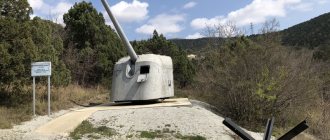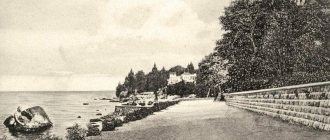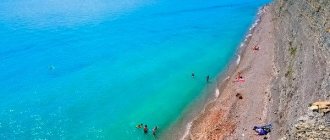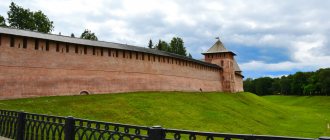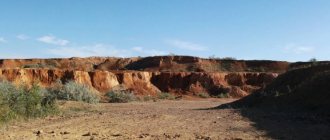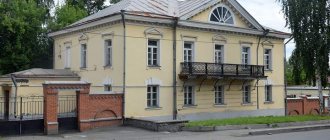Murmansk is one of the largest cities in the world, which is located beyond the Arctic Circle.
This city is located on the rocky eastern coast of the Barents Sea in the Kola Bay. This city is considered one of the largest ports in Russia, founded in 1916. Due to the warm Gulf Stream, Murmansk has become a major ice-free port on the Russian Arctic coast.
The decision to create a port is directly related primarily to Russia's goal of gaining access to the Arctic Ocean, through the gulf itself, which never freezes. Therefore, life in the city is inseparably linked with shipping.
Best hotels in Murmansk
Related materials:
- 31 attractions of Novorossiysk to visit
- 29 best attractions in Orel,…
- 43 best attractions in Minsk,…
- 36 Izmir attractions recommended for…
- 41 attractions in Crete that are worth visiting
- 33 attractions of Bakhchisaray that are worth visiting
- 24 must-see attractions in Fethiye
- 40 attractions in Limassol that are worth seeing
- 32 sights of Kronstadt that are worth visiting
Did you like the article? Share with friends:
1
FAQ
Where can you go with children in Murmansk? Museum of the History of the Murmansk Shipping Company, Nuclear Icebreaker "Lenin", Monument "Waiting", Monument to Anatoly Bredov, Oceanarium, Naval Museum of the Northern Fleet, Bridge over the Kola Bay.
What attractions in Murmansk should a tourist see first? Bridge over the Kola Bay, Kola Bay, Marine Station, Nuclear icebreaker "Lenin", Monument "Waiting".
What is interesting in Murmansk in winter? The most obvious is the northern lights. Murmansk port is also interesting to see in winter, as it is one of the largest ice-free ports in Russia.
When can you see the northern lights in Murmansk? The northern lights season starts in September and ends in April. All this time you can observe this interesting natural phenomenon.
Monument to Submariners
Murmansk is the only ice-free port in Russia beyond the Arctic Circle. It was founded in 1916 precisely as the northern outpost of the country, so it is not surprising that the atmosphere here is appropriate.
However, seas, oceans and ships do not always mean romance and beauty. Tragedies also happen. It was in memory of such incidents that a monument to submarine sailors who died in peacetime was erected in Murmansk. Sometimes it is called in short: the Kursk monument.
However, this is not just a monument, but a whole memorial complex. It represents the black metal cabin of the same Kursk submarine, which sank in the summer of 2000 in the Barents Sea with 118 crew members on board.
The felling was located here in 2009, and before that the Church of the Savior on Water and a lighthouse tower 17 meters high were built on the site.
The temple is beautiful in appearance and has an unusual iconostasis: it is made in the northern Russian style, made of linden wood.
The opening of the complex took place in 2002, and since then the place has become a favorite among citizens. The unofficial name of the place is the Kursk Monument.
The observation decks here offer a beautiful view of the city, so don’t be lazy and get to this city outskirts.
How to get there
If you want to feel all the complexity and heroism of naval service even in times of peace, come to the Leninsky district of Murmansk: the Kursk monument is located on the descent between the street. Chelyuskintsev and Heroev-Severomortsev Avenue.
You can get here from the center (for example, from Five Corners Square) by the same trolleybus No. 3 or even on foot.
Sights in the vicinity of Murmansk
Kola Bay
Kola Bay
One of the iconic natural attractions of Murmansk and the region amazes with its magnificence at any time of the year. Despite the harsh climatic conditions, the water surface of the bay is never covered with ice. On the western rocky coast is the port city of Polyarny. On the more gentle eastern slopes are Severomorsk and Murmansk.
Locals and tourists often come here to admire the view. The beauty of nature is immeasurable; even in the most severe cold you can hear the sound of running water. And the bay itself is surrounded by tall, spreading trees.
Address: Murmansk; GPS: 69.07115, 33.17644
Abram-Cape
Abram-Cape
The village was formed in 1920. Until 1937, it was called Varyazhsky Stream. At first, the number of residents did not exceed 25 people. Population growth began in 1930, when ship repair docks opened here. Cape Abram has been part of the city since 1950.
The cape offers a magnificent panorama of the natural beauty of the Arctic. This area played an important role in the air defense of Murmansk during the Second World War. In honor of the heroic anti-aircraft gunners, a memorial was opened on the cape.
Address: Murmansk, GPS: 68.97856, 33.02057
Lamb's forehead near Lake Semenovskoye
Lamb's forehead near Lake Semenovskoye
A rocky bulge formed by the convergence of glaciers in prehistoric times. There are quite a few similar formations in the Northern latitudes, but the Murmansk “lamb’s forehead” is located within the city limits, which makes it the most accessible to tourists.
The rocky outcrop is quite small, with an area of 0.5 hectares, but it deserves attention. Of interest is not only the “ram’s forehead”, but also the vegetation surrounding it: rare species of mosses, low-growing grasses and shrubs.
Address: st. Askoldovtsev, 1, Murmansk; GPS: 68.99468, 33.07257
When to visit: any time
Visit: free
Bridge over the Kola Bay
Bridge over the Kola Bay
The automobile bridge in the Arctic is one of the recognizable landmarks of Murmansk. Until 2009, it was considered the longest in the Arctic (2.5 km), but was inferior to the new bridge built in Yamal.
The construction of the Kola Bridge lasted about 20 years. The main highways connecting the city with remote western settlements of the region pass through the bridge. There are routes along it to Norway and Finland.
Every September, the bridge over the Kola Bay turns into the venue for the Gulf Stream sports festival.
Address: Murmansk; GPS: 68.90658, 33.04561
Waterfall on the Lavna River
Waterfall on the Lavna River
One of the most visited natural attractions of Murmansk is located not far from the city. The waterfall, 4 m high, is surrounded by picturesque northern nature.
Following to the waterfall, travelers will see real swamps, along which the famous berry of the North, the cloudberry, grows. The waters of Lavna are inhabited by pike, brown trout, perch, and burbot. Fishing is allowed here, so there are always a lot of people who like to sit with a fishing rod on the banks of the river.
Address: r. Lavna, Murmansk region. (20 km from Cape Abram); GPS: 69.02341, 32.94851
Opening hours: 24 hours a day
Teriberka
Teriberka
A small village on the shores of the Barents Sea, surrounded by taiga. Often called “the end of the world.” Teriberka has a rather harsh climate, and the polar night lasts more than a day. This place gained popularity among tourists after the release of the film “Leviathan.”
In the summer, lovers of extreme scuba diving and fishing come to Teriberka. In June, you can see killer whales and whales near the shore. The largest flow of tourists arrives in early autumn to admire the unforgettable beauty of the Northern Lights.
Address: Teriberka, Murmansk region; GPS: 69.18267, 35.11904
